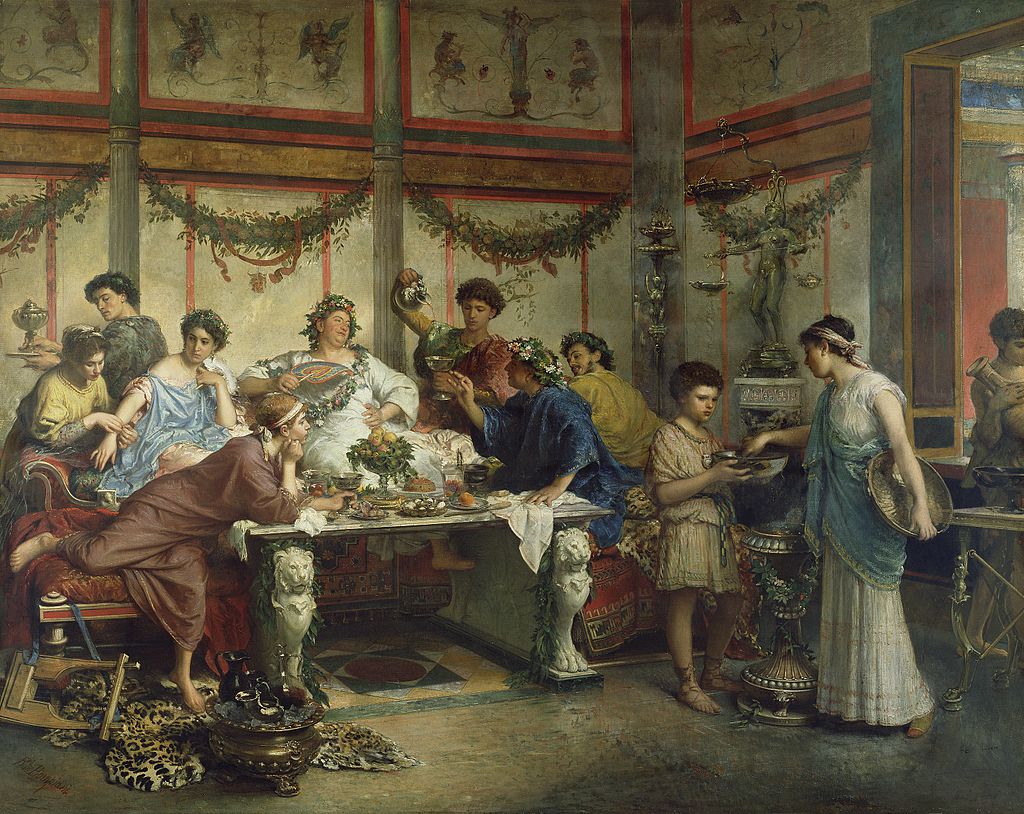

Going through the recipes of the only known cookbook to have survived from the ancient Greco-Roman world, De Re Coquinaria, one thing is striking: much of the cooking the book describes feels surprisingly familiar. The book suggests that dishes like pumpkin pie, French toast and even foie gras are much older than we think, dating back to the culinary traditions of ancient Rome.
While many recipes in its vast collection may seem bizarre or even too exotic for modern palates (roast parrot, flamingo braised in vinegar, peacock in a rich, peppery wine sauce among others), many flavors and preparations are still recognizable in modern Mediterranean cuisine: brined olives, pestos, fruit preserves, dried fish and cured meats.
As translator Joseph Dommers Vehling notes in The Conversation, precursors to contemporary dishes appear throughout—from amulum (a roux-like base), to sauces resembling vinaigrette, and bouillabaisse (a traditional fish soup originating in the port city of Marseille, France).
The work even includes early versions of coq au vin (though with fish rather than chicken), foie gras (using fig-fattened pig liver), scrambled eggs (with fish rather than bacon), pumpkin pie, and even French toast, with crustless bread broken into pieces, fried in oil and drizzled in honey.
De Re Coquinaria, attributed to Marcus Gavius Apicius, a Roman aristocrat who lived in the 1st century during the reign of Tiberius, and gained fame for his love for food, often showcases ancient Rome’s culinary extravagance. Yet its techniques and flavors reveal an unbroken thread from ancient kitchens to modern ones.

The ancient Roman cookbook is a technical cooking manual, divided into ten books, separated by topic and containing nearly 500 recipes, with many of them quite complex.
As with most ancient texts, it is believed it was copied over centuries, redacted, amended and edited, leaving the original cookbook shrouded in mystery. Two 9th-century copies of the cookbook are known to have survived—one is in the Vatican and the other at the New York Academy of Medicine in New York City.
Over 2,000 years later, Apicius’ cookbook still intrigues scholars and cooks as it has done for centuries, with its glimpses of Roman life.
“I think if people are looking into Roman cooking at all, they go to Apicius first,” Rosemary L. Moore, lecturer in History and Classics at the University of Iowa, told Cape Cod Times. That’s why the book still counts, she noted.

Apicius gained lasting notoriety, wrote the late historian Phyllis Pray Bober in her book Art, Culture and Cuisine: Ancient and Medieval Gastronomy, by killing himself when he realized there wasn’t enough money left to keep him in the extravagant culinary style to which he was accustomed. That style, she wrote, included creating a dish “from the crests of living cocks,” parboiling poultry before cleaning and plucking to “seal in the full savor of fat and juices,” and killing pigs with doses of honeyed wine. Apicius also fed dried figs to pigs in order to fatten their bellies for foie gras.
“The special flavor imparted to pork liver as a result of being ‘figged’ ultimately came to be applied generically to all liver (fegato in Italian),” Bober added.
Recipes in Apicius’ cookbook have been panned for being over-spiced (possibly to cover up the taint of spoiled food), over-flavored and over-the-top, reflecting the Roman aristocrat himself, with scholars noting that the book is for cooks by a cook, adding that prior knowledge and training is assumed.
But if you want an ancient Roman recipe that can be done at home, here’s one for Rose Wine.
ROSE WINE
Make Rose Wine in this manner. Rose petals, the lower white part removed, sewed into a linen bag and immersed in wine for seven days. Thereupon add a sack of new petals which allow to draw for another seven days. Again remove the old petals and replace them by new ones for another week. Then strain the wine through the colander. Before serving, add honey sweetening to taste. Take care that only the best petals free from dew be used for soaking.
